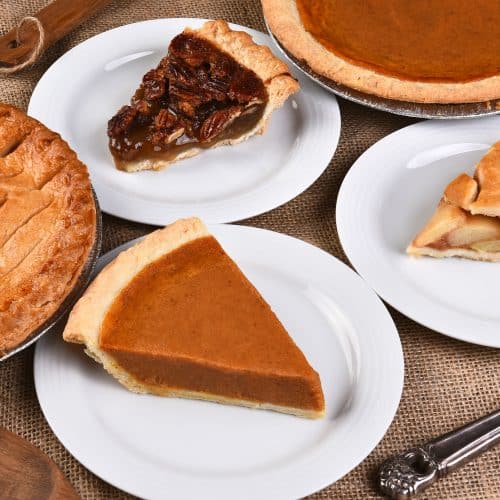
Yikes! The holidays are here!
According to a new study, Americans typically gain a small amount of weight around Thanksgiving and then a bit more around Christmas.i The researchers estimate that it takes about 5 months to lose those holiday pounds. Rather than starting the New Year with a resolution, this year resolve to eat and live healthfully throughout the holidays to start the year without extra pounds. Get started with these five steps to avoiding holiday weight gain.
Focus on the meaning of the season.
It goes without saying that holidays and holiday parties aren’t all about the food. The season is full of a variety of parties. Some are more social gatherings where it can be easier to mingle while avoiding overeating. Others means sitting in the kitchen or by the buffet table where it can be hard to ignore the wonderful wafting smells. Make an extra effort to reduce the amount you eat and drink and focus more on the conversation and the festivities. Donate your time to help someone less fortunate also enjoy the holidays. Even baking cookies takes on new meaning when you deliver those cookies and a basket of fruit to a homeless shelter.
Be choosy.
Of course, food really does matter. But be choosy and indulge only in those foods that have special meaning and taste fabulous. If it isn’t awesome, there’s no good reason to eat indulgent foods. If you love holiday pies, enjoy some. But skip the brownies, cheesecake and other treats that don’t scream delicious and holiday to you. And just because you’ve always had holiday cookies or candies sitting out, doesn’t mean that you need to continue that tradition. Find another way to add to the festive atmosphere.
Think small.
Portion control may be your most important strategy. Nearly any food can fit if your portion is small enough. Use small plates. Avoid second helpings. Prepare mini muffins and small cookies, and bake starchy casseroles in muffin tins or individual ramekins.
Make substitutions.
You have lots of control over your food when you’re in charge of the cooking. For example, by swapping out part of the sugar in pumpkin bread for sucralose or another sugar substitute and trading cream for milk in pies, you save lots of calories, added sugars and saturated fats. Below are other ideas for healthy swaps. With a little thought, you’ll find lots of ways to keep the taste and the feel of the holiday without hurting your health.
| Food | Instead of This | Use This |
| Stuffing | Butter | Canola oil and chicken broth |
| Pork sausage | Lean turkey sausage | |
| Cranberry sauce | Sugar | Low calorie sweetener or a combination of sugar and low calorie sweetener |
| Gravy | Full pan drippings | Pan dripping skimmed of fat |
| Holiday drinks | Egg nog | Soy nog |
| Holiday punch | Holiday sparkler with sparkling water or diet lemon-lime soda | |
| Pie | 2 crusts | Single crust or try pumpkin custard without a crust at all |
| Baked goods | Butter | Canola or olive oil (sub 3 tablespoons oil for 4 tablespoons butter) |
Celebrate with active activities.
For many people, the holiday season involves shopping. It can be less frustrating to park in a well-lit space far away from the entrance instead of circling the parking lot to look for a space. This can help you add extra steps to your day while reducing your stress. Instead of sitting around the TV watching one holiday movie after another and digging into platters of holiday treats, engage your family and friends in active holiday activities. Play a game of kickball, walk a nearby neighborhood to scout out the best decorations, volunteer to clean up after a party or hang an elderly neighbor’s holiday lights. There are so many ways to move instead of eat. And don’t forget to continue your regular exercise routine. Even if you have to cut it short, keep your usual time for walking, jogging or other exercise. The structure will help you now and make it easier later to return to your regular schedule.
Most of all, be mindful of your choices. Celebrate good health and enjoy the holidays!
 Jill Weisenberger, MS, RDN, CDE, FAND has worked as both a nutrition counselor and a diabetes educator in the hospital and research settings, and now in private practice in Newport News, VA. Jill is the author of Diabetes Weight Loss – Week by Week and two upcoming books, The Overworked Person’s Guide to Better Nutrition and 21 Things You Need to Know about Diabetes and Your Heart. She is a member of the Academy of Nutrition and Dietetics, the American Association of Diabetes Educators and the American Diabetes Association. Jill is a paid contributor to Sucralose.org. Follow Jill on Twitter @NutritionJill and find more at www.JillWeisenberger.com.
Jill Weisenberger, MS, RDN, CDE, FAND has worked as both a nutrition counselor and a diabetes educator in the hospital and research settings, and now in private practice in Newport News, VA. Jill is the author of Diabetes Weight Loss – Week by Week and two upcoming books, The Overworked Person’s Guide to Better Nutrition and 21 Things You Need to Know about Diabetes and Your Heart. She is a member of the Academy of Nutrition and Dietetics, the American Association of Diabetes Educators and the American Diabetes Association. Jill is a paid contributor to Sucralose.org. Follow Jill on Twitter @NutritionJill and find more at www.JillWeisenberger.com.




